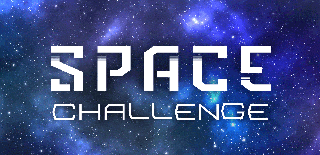Introduction: Educational Space Material
Materials needed
Black or dark blue fabric - 1m x 2m
Sewing thread OR fabric paint (suitable for dark fabrics)
Fabric pins or clips
Sewing machine or a needle for handstitching
8 styrofoam balls - diameters 2cm (Mercury), 3cm (Mars), 5cm (Earth, Venus), 15cm (Jupiter), 12 cm (Saturn), 8cm (Uranus, Neptune)
Washable fabric chalk or marker (suitable for dark fabrics)
Pencil
Scissors and paper cutting knife
Cardboard for the Saturn ring -20x20 cm. Felting needle (good idea to have extras if you break one.. or two) Felt - red, blue, orange, yellow (other colors optional)
Step 1: Preparing Your Fabric
Cut out a rectangle measuring 1 m x 2 m (if you had more than that). If the fabric isn't fraying you can leave the seams as they are. Fold over about 5mm to the wrong side of the fabric, then fold again about 1cm, pin or put on a clip and sew a straight stitch few millimeters from the folded place.
You can find an example for sewing nice mittered corners here: https://mellysews.com/2014/11/sew-napkins.html
Tip: If you are especially crafty and have a serger - sew the seams without folding and it will leave more time and space (pun intended) for other steps.
Step 2: Painting/sewing the Orbits
You need to paint or sew orbit on the fabric. (Each planet ir our Solar system is orbiting around the Sun.) Use your marker or chalk to draw guidelines - draw the first circular orbit in the corner of the fabric and a place for the planet (circle in according size) on the orbit. Then draw the bigger ones, 8 in total (make sure you leave enough space!). Also make sure that you draw a full circle for the smaller one. Draw just a curved line for the bigger ones and add a place (cirlce) for each planet. When you are satisfied with the look, paint or sew over the lines you just drew. The real orbits are elliptical, but we are drawing circles to save space on the fabric.
Step 3: Making Planets
Start making planets! Sizes of the styrofoam balls can vary, you just need to get the effect of some planets being way bigger than others. We will be needle felting around the styrofoam balls for the most of the planets and felting only for a few tiny ones.
Take the felt, spread it around the styrofoam ball and start putting the needle in and out of the felt - it will secure the felt and make it stick to the ball. I used a needle holder that lets you felt with 3 or 5 needles at a time, but you can do just fine without. Keep adding layers and moving the needle (felting) until the styrofoam ball is not visible and felt is attached to the ball. Get inspiration for colors of the planets from pictures of NASA here: https://solarsystem.nasa.gov/planets/overview/
You can add other colors, swirls and line by putting another color over your first layer - you can even make detailed continents on the Earth if you want! Roll up a little ball of felt and work with a needle to create small Moon to accompany the Earth.
Tip: If you have got familiar with the felt changing its volume while felting and have enough left, you can make Mercury and Mars without using styrofoam balls as a base.
Step 4: Making the Ring of Saturn
There is a joke that God liked Saturn so much he put a ring on it, so we should not leave it without one. Draw 12 cm inner circle and 20 cm outer circle. Cut out the ring and place it on Saturn.
Step 5: Exploring the Universe!
Place the planets in their places on the fabric starting from the smallest orbit - Mercury, Mars, Earth (and the Moon), Venus, Jupiter, Saturn, Uranus, Neptune. There are many options how to use this material to educate children (and not only) about universe. Can we even describe it as.. universal?
You can put a candle or a lamp in the middle to represent sun, add cards with names, learn facts about planets, space travel, compare the lenght of the day on various planets and so on. Find many interesting facts here: https://space-facts.com/planets/

Participated in the
Space Challenge













